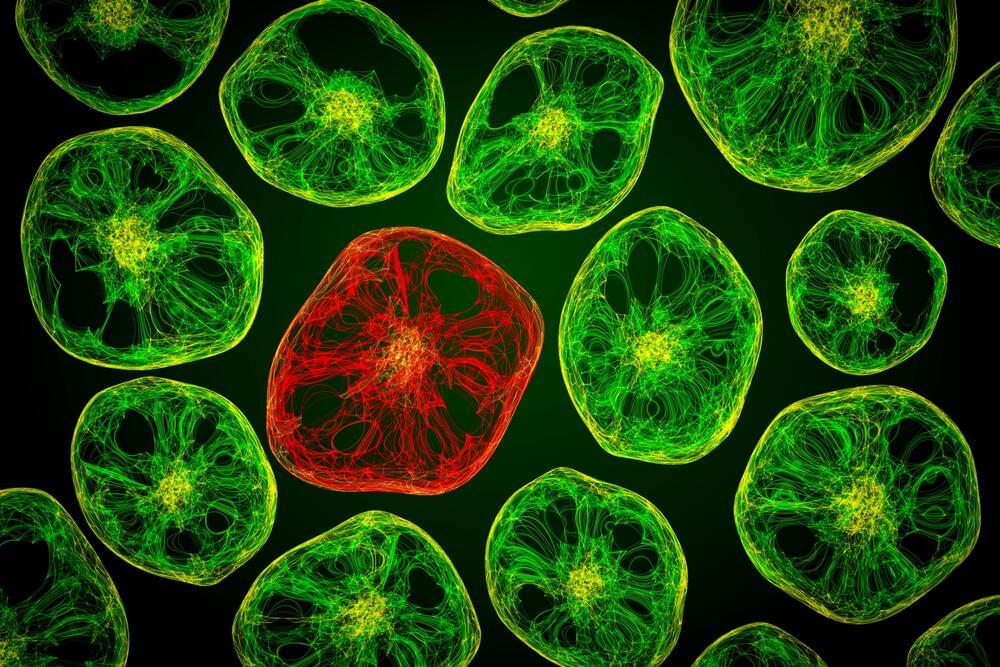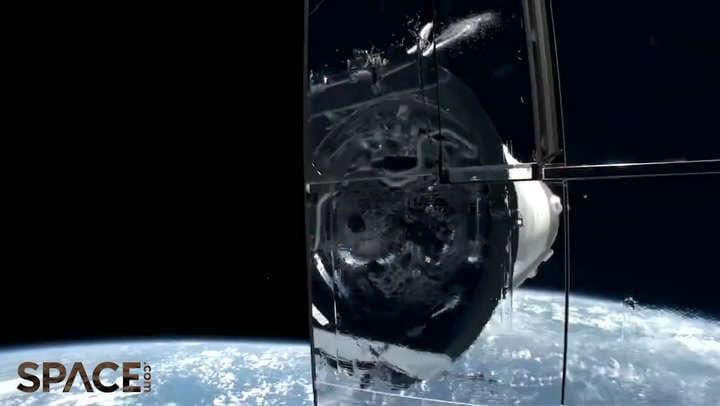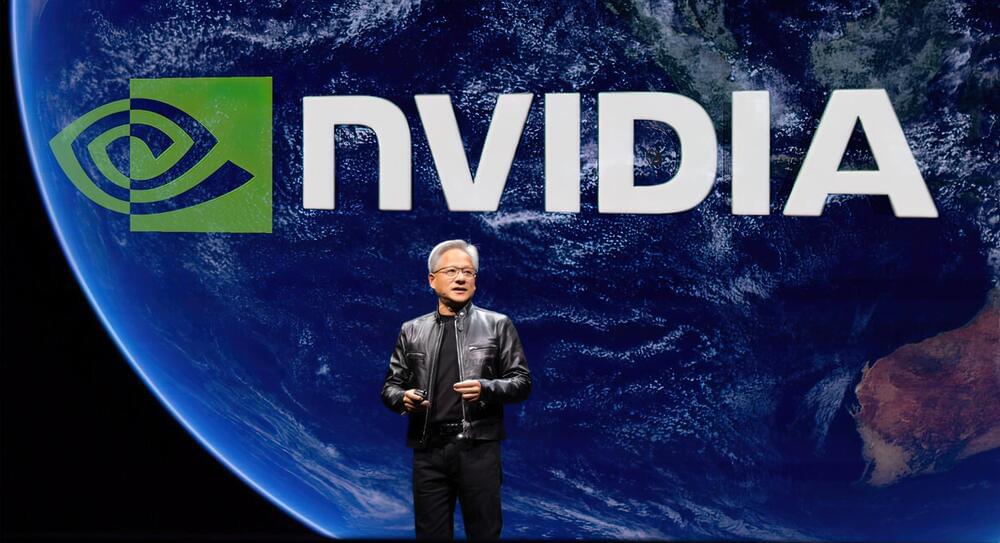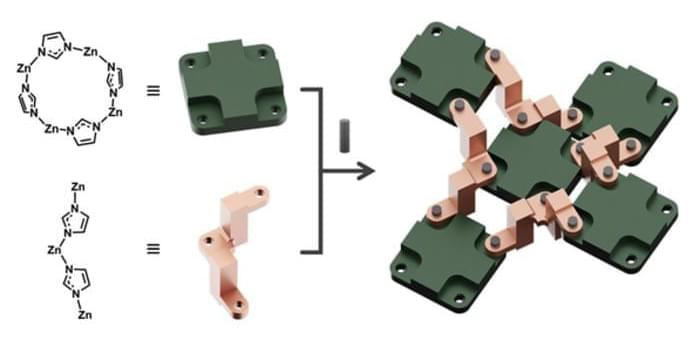Page 994
Jun 29, 2024
SpaceX Starlink Satellites Deployed In Stunning View From Space
Posted by Genevieve Klien in categories: internet, satellites
Starlink satellites were deployed by SpaceX. Watch multiple views captured by cameras aboard the Falcon 9 rocket second stage. Credit: Space.com | footage courtesy: SpaceX | edited by Steve Spaleta Music: New Age Solitude by Philip Ayers / courtesy of Epidemic Sound.
Jun 29, 2024
Monster 310-mile automated cargo conveyor will replace 25,000 trucks
Posted by Genevieve Klien in categories: government, robotics/AI, transportation
The Japanese government is planning to connect major cities with automated zero-emissions logistics links that can quietly and efficiently shift millions of tons of cargo, while getting tens of thousands of trucks off the road.
Jun 29, 2024
How the CIA is using generative AI — now and into the future
Posted by Kelvin Dafiaghor in categories: futurism, robotics/AI
From human intelligence collection to information gathered in the open, the CIA is leveraging generative artificial intelligence for a wide swath of its intelligence-gathering mission set today, and plans to continue to expand upon that into the future, according to the agency’s AI lead.
The CIA has been using AI for things like content triage and “things in the human language technology space — translation, transcription — all the types of processing that need to happen in order to help our analysts go through that data very quickly” as far back as 2012, when the agency hired its first data scientists, Lakshmi Raman, the CIA’s director of AI, said during an on-stage keynote interview at the Amazon Web Services Summit on Wednesday in Washington, D.C.
On top of that, AI — particularly generative AI in recent years — has been an important tool for the CIA’s mission to triage open-source intelligence collection, Raman said.
Jun 29, 2024
ChatGPT could be smarter than your professor in the next 2 years
Posted by Dan Kummer in categories: futurism, robotics/AI
“If you look at the trajectory of improvement, GPT-3 was maybe toddler level intelligence, systems like GPT-4 are smart high schooler intelligence and in the next couple of years we’re looking at PhD level intelligence for specific tasks,” she said during a talk at Dartmouth.
Some took this to suggest we’d be waiting two years for GPT-5 but looking at other OpenAI revelations, such as a graph showing ‘GPT-Next’ this year and ‘future models’ going forward and CEO Sam Altman refusing to mention GPT-5 in recent interviews — I’m not convinced.
Continue reading “ChatGPT could be smarter than your professor in the next 2 years” »
Jun 29, 2024
NVIDIA Gears Up For $50 Trillion “AI Automation” Market, CEO Says That Blackwell Will Be The “Most Successful” Product In Firm’s History
Posted by Kelvin Dafiaghor in categories: futurism, robotics/AI
NVIDIA’s CEO Jensen Huang believes that the AI frenzy will automate a whopping $50 trillion worth of companies, stating that Blackwell will play a dominant role.
NVIDIA Isn’t Taking The Foot of The AI Accelerator Pedal Any Time Soon, Plans To Take Blackwell’s Adoption To a Whole New Level
NVIDIA has undoubtedly managed to pick up a market that will progress rapidly in the future. Not only is every big tech firm, whether Microsoft or Amazon, forced into the race of “AI automation,” but the demand for adequate computing power is rising massively.
Jun 29, 2024
How scientists build rotatory machines with molecules
Posted by Dan Breeden in categories: computing, nanotechnology
Machines have evolved to meet the demands of daily life and industrial use, with molecular-scale devices often exhibiting improved functionalities and mechanical movements. However, mastering the control of mechanics within solid-state molecular structures remains a significant challenge.
Researchers at Ulsan National Institute of Science and Technology (UNIST), South Korea have made a groundbreaking discovery that could pave the way for revolutionary advancements in data storage and beyond. Led by Professor Wonyoung Choe in the Department of Chemistry at UNIST), a team of scientists has developed zeolitic imidazolate frameworks (ZIFs) that mimic intricate machines. These molecular-scale devices can exhibit precise control over nanoscale mechanical movements, opening up exciting new possibilities in nanotechnology.
The findings have been published in Angewandte Chemie International Edition (“Zeolitic Imidazolate Frameworks as Solid-State Nanomachines”).
Jun 29, 2024
New intelligence model could upend biology, genetics, medicine and AI
Posted by Dan Breeden in categories: biotech/medical, genetics, robotics/AI

This may be about as wildly entertaining, disruptive and philosophically profound as legitimate scientific research gets. Michael Levin’s work in cellular intelligence, bioelectrical communication and embodied minds “is going to overturn everything.”
Jun 29, 2024
Semiconducting MAX phases show promise for high-temperature thermoelectric applications
Posted by Dan Breeden in category: energy
New research identifies semiconducting MAX phases with low thermal conductivity and high thermoelectric efficiency, potentially advancing high-temperature energy harvesting technology.
Jun 29, 2024
New method developed for measuring thermal expansion in atomically thin materials
Posted by Dan Breeden in categories: computing, particle physics
Advanced materials, including two-dimensional or atomically thin materials just a few atoms thick, are essential for the future of microelectronics technology. Now a team at Los Alamos National Laboratory has developed a way to directly measure such materials’ thermal expansion coefficient, the rate at which the material expands as it heats. That insight can help address heat-related performance issues of materials incorporated into microelectronics, such as computer chips.
The research has been published in ACS Nano (“Direct measurement of the thermal expansion coefficient of epitaxial WSe 2 by four-dimensional scanning transmission electron microscopy”).
“It’s well understood that heating a material usually results in expansion of the atoms arranged in the material’s structure,” said Theresa Kucinski, scientist with the Nuclear Materials Science Group at Los Alamos. “But things get weird when the material is only one to a few atoms thick.”















